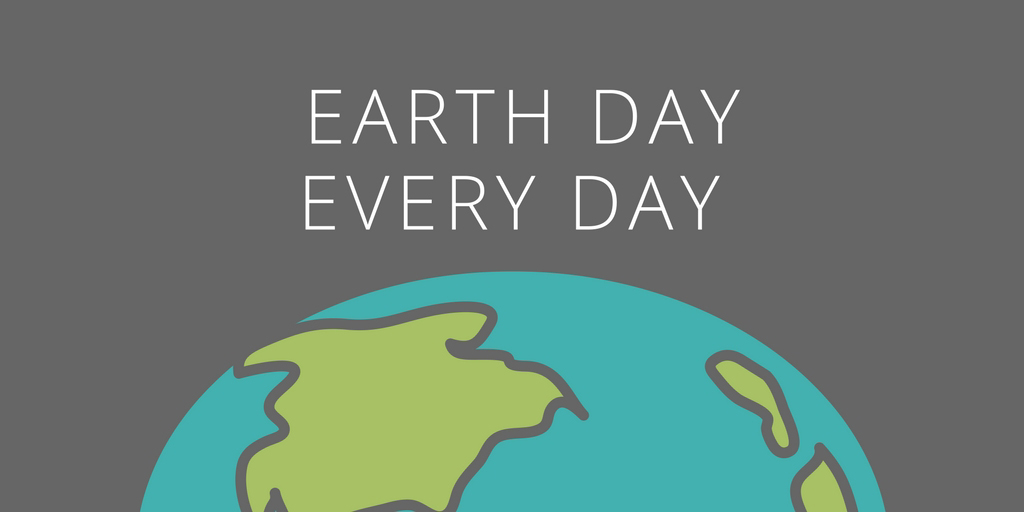
This is a busy time of year for sustainability professionals. Earth Day is THE holiday for advocates promoting environmental sustainability, whether as part of a corporate sustainability program or in a community-based setting. That means that green-themed lectures and sustainability fairs abound this time of year.
Ultimately that creates two challenges: First, the efforts occur just once a year. Second, in many cases, these efforts do not engage people, as we like to say, beyond the choir – people who are already trying to live an eco-friendly, sustainable lifestyle.
Earth Day Every Day
Increasingly, companies and local communities are adopting aggressive sustainability goals. More than 2,500 U.S. entities have committed to fulfill the Paris Climate Treaty, with or without the US government. To achieve aggressive results, though, these entities need to achieve culture change; they need to create a new normal where everyone makes smarter choices about resource use.
Unfortunately, you can’t accomplish broader success by only talking about sustainability once a year. Don’t get us wrong, we value Earth Day, and we’re proud of its Wisconsin roots, too. But when it comes to inspiring deeper change, consistency is really important. People need to see and hear messages multiple times, and in a variety of formats if we want to get their attention. More, people need to see real-world examples – examples that are able to gain trust because of their authenticity. A once-a-year proclamation isn’t going to prompt households to pursue energy retrofits any more than a display in the lobby will prompt people to turn off their task lights at the end of the workday. If you want culture change you need ongoing engagement.
You also need to ensure there isn’t ongoing counter-examples that undermine your sustainability message. For example, if employees see energy and other resource waste in their daily work life, they aren’t going to find your Earth Day messaging very compelling. Simple stuff, like a leaky faucet in the women’s room, can undermine your efforts to say that resource use matters. While that faucet isn’t the most material use of water in your operations, it’s a waste that people see every day, contradicting your once-a-year message on Earth Day. These employee perspectives on sustainability in the workplace are extremely valuable.
In addition to eliminating those counter-examples, sustainability professionals need to talk about sustainability ALL THE TIME, not just in April. Share success stories with staff in real time, rather than providing a summary once a year. Offer tips on what people can do at home year round, such as home heating tips in the fall, and again in January when heating costs are often most relevant. In the same way your company reinforces its customer service or safety culture year-round, we also need to reinforce the sustainability culture every day, not just on Earth Day.
Achieving Real Employee Engagement around Sustainability
After you’ve ensured that you’re engaging people on sustainability throughout the year, you need to make sure you’re actually engaging them. for instance, a 45-minute summary of the company’s progress toward sustainability targets isn’t engagement, it’s a lecture. And it’s not likely to attract a broad audience or inspire people to think about how they can do their part.
Ultimately you want enthusiasm and action. You want people to get excited about what’s happening in your business or community, and you want them to be inspired enough to join the effort.
A small group of already “green” people is easy to inspire. These folks will respond to a technical summary of community-scale results or a checklist of things to do. However, that’s not the way you’ll reach everyone else.
The people you want to reach are incredibly busy. They are juggling work and home responsibilities, and in most cases, they presume they are already doing a pretty good job conserving resources. Importantly, they feel they are doing as well as everyone else.
Despite popular belief, sharing information is not the most effective way to engage folks around sustainability. This is because the problem is not a lack of information, it’s a lack of motivation.
First, we need to make it easier for people to do the right things. If we want more people to recycle, we must ensure there’s a recycling bin next to every single trash bin. And label trash bins “landfill,” so that everyone’s clear about where that stuff goes! Create an open a dialogue with people, so you can hear about the barriers people experience when they try to do the right things. If there’s confusion about when to leave computers on or idle vehicles, then address that confusion—again, so that it’s easier the next time to do the right things.
Make Doing the Right Things Fun and Social
Instead of a model where you lecture on people on what they could be doing better, invite employees to share their own sustainability stories. Incentivize staff who share great tips with small prizes. We learned this lesson in our first partnership when we did a “brown bag” on cooling strategies. An attendee, a native Georgian now living in Wisconsin, shared her approach, which prompted increased conversation and questions. When you give people opportunities to teach each other, you reinforce that sustainability is a shared value – that everyone is part of this effort. More, this approach creates opportunities for you to recognize people and thereby encourage others to step forward as well. Again, if you are aiming for culture change, you need to get everyone engaged.
We hope you have a terrific Earth Day and that it’s the beginning of year-long efforts that inspire your stakeholders to be part of the solution. If you’d like to learn more about how Cool Choices can help with your efforts, please contact us.
Comments are closed.




